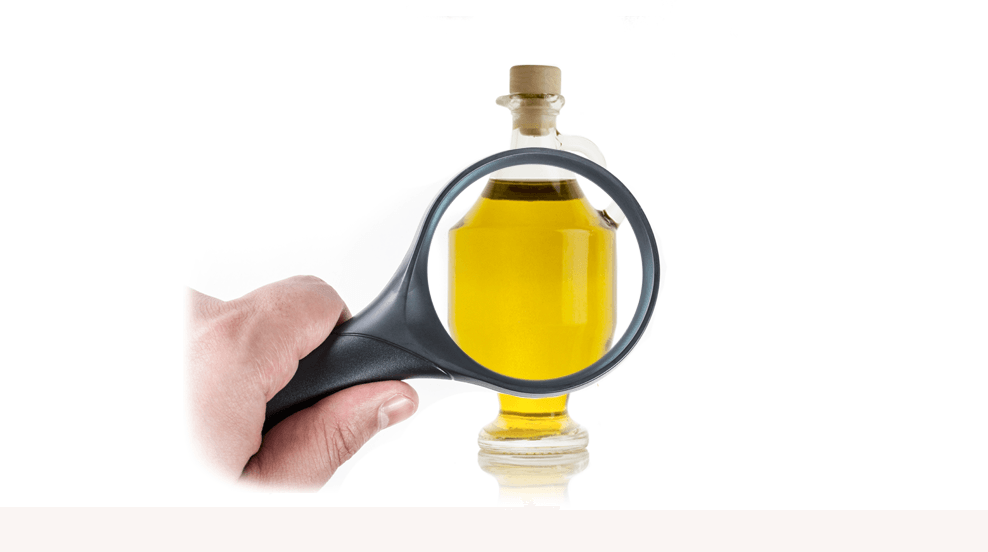This post was posted here first, then we decided to move it to our blog section recently.
As I’ve promised many of you guys who emailed me asking about it, here’s a list of some of the most common myths getting on the path of people and depriving them from taking advantage of the real pure Argan oil potential.
Please note that this particular post is probably one of the most important ones in our series. So you might want to add this page to your favourites and check back from time to time as it will be updated regularly.
I’ll make my best to write ONLY about the facts I know and let any opinions aside as I think those can’t ever be that accurate simply because they are, more often than not, biased and subjective.
With that in mind, I’d love to add that your help to grow the Argan oil myths list is needed and highly appreciated. You can contribute herein through one of the most powerful sections of any website: the comment section.
Comments are often a lot more informative that complements the stuff written in the post itself. So make sure you tell me if you think I’ve missed anything significant and I’ll include it in this list.
![]()
Here we go with the first one of the Argan oil myths!
1. Argan oil is also known as argon oil:
Argon has absolutely nothing to do with Argan. Argon is a chemical element with symbol Ar and atomic number 18. It is in group 18 of the periodic table. And Argon is the third most common gas in the Earth’s atmosphere.

—
2. Argan tree grows nowhere but in Morocco:
Natural Argan tree grows in Morocco, some areas of Algeria as well as in Mexico. BUT, the only one of those which yields the fruits used for extracting oil is the one that grows in Morocco.
3. This tree was and actually is considered pious and holy to locals:
No seriously, how many layers of ignorance does one have to go through to come up with this type of humbug!?
The official religion in Morocco is Islam, a monotheistic religion and hence we would never worship anything else apart from the creator.
—
4. Argan oil is produced only by Berber women:
I don’t know how almost everybody writing something about Argan oil came to the idea that ONLY Berber women are producing Argan oil.
Fact is, although a lot of people in the Argan areas are Berber, Argan oil is produced by native women, both Berber and Arabs alike.
(And yes, I’m a Berber!)
5. The only people who are permitted to harvest Argan oil are the Berber women:
I’ve never heard about this here in Morocco.
Just imagine an Arab family owning a big piece of land with Argan trees. With which right would anybody prevent them from harvesting their own Argan fruits? only because they are not Berbers!?
That’s simply ridiculous.
—
6. There is a kind of Argan oil made from nuts collected from goats waste:
Contrary to this kind of rumors circulating on the cloud, the Argan nuts “harvested” by the goats are spit out straight after they ruminate and eat the fleshy part (pulp). Seems weird but it’s cleaner than it sounds. This kind of Harvesting has became extremely rare simply because the raw material needs are much higher than what any goat herd can collect.

—
7. Cold pressed, or first-pressed oil, is produced using a mixture of traditional and modern techniques:
There is no mixed extraction method containing traditional AND modern techniques! It’s either one or the other. Additionally, the term “first-pressed” is a purely marketing wording with no factual sense. It suggests that the oil in this case is the “first oil that came from the first press” of the Argan kernels.
This is not correct simply because there’s no second press!
8. Pure Argan oil should never be used for cooking:
Please note that there are two kinds of Argan oil though: cosmetic (used for beauty purposes only) and Culinary (can be used for both, cosmetic and culinary purposes alike).
So Argan oil can be used for cooking, as a salad dressing and can be even consumed as a dipping with bread and peppermint tea (Moroccan style).

—
9. The local population obtains as much as 25% of their daily lipid intake from the Argan tree:
hmm, how did they measure that!?
10. Amlou is the a thick chocolate-colored paste residue left from the kernels after the extraction:
When I read this, I though I would crack a rib laughing! One must be living under a rock to pretend and spread this kind of bollocks.
Amlou is made by simply grinding roasted almonds and mixing these with pure Argan oil plus some honey. This Moroccan thick brown almond dip with a kind of peanut butter consistency is used locally often as a bread dip and with moroccan crêpes (B’ghrir).
—
11. The Argan tree wood is also used decoratively in some of the inlaid boxes which are made in Essaouira:
Pablum! The wood used to make not only beautiful boxes, but all kinds of things in Essaouira is called Thuya (aka. Thuja or Ar’ar in Arabic) and has not the slightest thing to do with the Argan tree wood.

—
12. It is highly priced due to its limited production:
Malicho! Sure the Quantity the Argan area can produce is limited due to the scarcity of the Argan tree in comparison to the worldwide increasing demand.
And sure the initial price of Argan oil in Morocco is relatively high due to the cumbersome and back-breaking harvesting and extraction process.
But the number one factor which skyrockets the prices is the middleman chain between the local producers and the end customers.
You don’t have to pay over-the-top prices to get your hands on genuine organic Argan oil. Look around and compare the prices of different locations, because if the price is too high, you’re probably paying middle-men bucks additionally to their marketing campaigns and (senselessly) expensive packaging.
If you want to make sure to avoid being had in this matter, you might want to check our ultimate guide for buying Argan oil to get the best deal for your bucks.
The Argan oil prices in Morocco are generally stable throughout the year or with some slight increase, depending in the area you buy your oil from.
—
13. The first time the Argan tree was reported, it was, allegedly, by a certain explorer named Leo Africanus around 1510 who supposedly then brought a specimen to Amsterdam where it was cultivated:
The truth is that the Argan tree was first documented by the muslim botanist, scientist, pharmacist and physician Ibn Al Baytar from the muslim Spain.
He was the first one to write about it and its oil and he described it in his botanical encyclopedia in the 13th century.
I don´t know how you feel about this kind of stuff, to me this is a nasty bold lie!
And the problem is that there are a dozen of the so-called Argan oil “experts” out there parroting this utter nonsense, without taking time to verify what they are delivering to their readers/customers!
—
14. Overgrazing by goats and over-cutting by the locals led to a near-extinction of the Argan tree:
Almost everybody who wrote a study or a review of any kind about the Argan tree is talking about how alarmingly fast one of Morocco’s most important forest species: the Argan forests were disappearing in the last 50 years.
This is true.
However, they blame the heavy exploitation only to the natives with their firewood needs and their goats (who has been here for centuries using the tree without any noteworthy abuse of the tree by the way!)
Of course this minimally affected the stock of the diminishing Argan area in the last decades and it is no brainer to recognize that changing the awareness of the locals towards the Argan tree will have great benefits in the long run.
Yet the impact of the local use is way less harmful than other factors these so called “researchers” seem to simply neglect.
So this misrepresentation / vague supposition is like blaming people of generating CO2 while breathing and at the same time turning a blind eye to these millions of factories pumping their life-threatening deluge of CO2 in the atmosphere.
If you want to read more about this, you may want to check my post about the different issues challenging the future of the Argan oil here and here.
—
15. Argan oil of standardized quality is marketed worldwide:
If that’s true, how come there all these people struggling to get their hands on real pure Argan oil??
I often read questions in forums etc… about where to get “cheap” Argan oil!!
What these folks don’t realize is that there is no cheap Argan oil exactly like there’s no cheap 24 Karat Gold. Either you buy genuine Argan oil or you buy something else with some drops of Argan oil in it. Period.
If you’re still searching for cheap Argan oil, you might want to read this post!

—
16. Some sellers prompting people to ”Hurry” and “get your supply of Argan oil while the main stock in Morocco lasts”:
Well, The Argan tree surely faces many challenges and no one can predict how things will be next (for this tree as for everything else in life!).
But think about it, it’s not like you can buy 100 litter of Argan oil, stock it at home and use it little by little over the next decades. That’s plain nonsense.
–
So there you have it.
As stated before, I’m fully aware that it’s impossible to include everything in this post, and I also realize that this post can’t be completed in one shot, if you consider the amount of rubbish about Argan oil flooding the internet.
It’s more of a selection of the points that I think one should learn from while I was around.
Again, I’d love to hear from you about your experience with Argan oil, your questions or if you simply think I’ve missed anything important here in the comments section.


